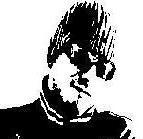| |
| Author
|
So, anyone using the K-System? Opinions?
|
vegetal
Vegetal/Peacespect

Started Topics :
19
Posts :
1055
Posted : Apr 8, 2008 21:49
|
I havenīt read the article yet and im tired as hell but after reading the posts here two questions came up, how come that the soundlevel only rises from 83 to 85dB(A) when you double the soundpressure? It should be a +3dB rise mathematically speaking, what detail did i miss?
The other thing that struck my mind was how imperative is the dB-meter, are we talking "brüel and kjaer"-quality or cheap chinese quality? When i come to think of it, probably cheap chinese will do the trick
        Demand recognition for the Armenian genocide 1915 Demand recognition for the Armenian genocide 1915
http://www.devilsmindrecords.org/
http://www.myspace.com/vegetalmusic
http://www.checkpoint-music.com/ |

|
|
Tomos
IsraTrance Full Member

Started Topics :
84
Posts :
981
Posted : Apr 8, 2008 22:24
|
Quote:
|
On 2008-04-08 21:49, vegetal wrote:
I havenīt read the article yet and im tired as hell but after reading the posts here two questions came up, how come that the soundlevel only rises from 83 to 85dB(A) when you double the soundpressure? It should be a +3dB rise mathematically speaking, what detail did i miss?
|
|
This works in mono, but in stereo perhaps some frequencies are additive and some subtractive, so the rise isn't a full 3db.
Or maybe it has something to do with the A-weighting.
Just a guess..
Another thing that strikes me is, if your room isn't treated and the microphone is placed at the listening position, is it an accurate representation of 85db? |

|
|
vegetal
Vegetal/Peacespect

Started Topics :
19
Posts :
1055
Posted : Apr 8, 2008 22:59
|
Quote:
|
On 2008-04-08 22:24, Tomos wrote:
Quote:
|
On 2008-04-08 21:49, vegetal wrote:
I havenīt read the article yet and im tired as hell but after reading the posts here two questions came up, how come that the soundlevel only rises from 83 to 85dB(A) when you double the soundpressure? It should be a +3dB rise mathematically speaking, what detail did i miss?
|
|
This works in mono, but in stereo perhaps some frequencies are additive and some subtractive, so the rise isn't a full 3db.
Or maybe it has something to do with the A-weighting.
Just a guess..
Another thing that strikes me is, if your room isn't treated and the microphone is placed at the listening position, is it an accurate representation of 85db?
|
|
If the room isnīt treated i think you probably gonna end up with a lower level of direct sound, concerning that the decay of the room will probably add to the soundlevel.
        Demand recognition for the Armenian genocide 1915 Demand recognition for the Armenian genocide 1915
http://www.devilsmindrecords.org/
http://www.myspace.com/vegetalmusic
http://www.checkpoint-music.com/ |

|
|
Alex Roudos
IsraTrance Junior Member

Started Topics :
33
Posts :
411
Posted : Apr 8, 2008 23:14
|
A cheap db meter will do the trick but not very accurately. I got mine for 50 euros and is +-2dbs accurate.
The db meter must be set to c-weighted, slow. I have no idea why the 83db become 85db, and to be honest it has crossed my mind too.
As for the treated room, i'd say that if the room isn't at least in the very absolute minimum treated, then this should be the first priority and not calibrating the speakers. Many people have reported that can't mix at 85dbs as it's too loud for them. In an untreated room such a volume would be awful and extremely fatiguing just to start with.
        A friend told me once that the biggest mistake we make is that we believe we live, when in reality we are sleeping in the waiting room of life. A friend told me once that the biggest mistake we make is that we believe we live, when in reality we are sleeping in the waiting room of life. |

|
|
MadScientist
IsraTrance Full Member

Started Topics :
97
Posts :
1220
Posted : Apr 8, 2008 23:22
|
How 85dB became 83, reverted to 85 (but was really 83) and remains mired in politics and inexact measurement methods:
The K-System is a cousin to the theatre standard, proposed SMPTE recommended practice: relative and absolute sound pressure levels for motion-picture multichannel sound systems. This SMPTE Document RP 200 defines the calibration method in detail but has flip flopped its measurement technique in several revisions since 1995.
In the 1970s the value had been quoted as 85dB SPL at o VU but as the measurement methods became more sophisticated, this value proved to be in error because of several problems:
- variations in VU meters, as much as 2dB
- variations in the amplitude of pink noise depending on the cable length and bandwidth of measurement
- variations in the crest factor and style of the pink noise generator
- bandwidth of the loudspeaker system und calibration
A measurement instrument with mean response (simple averaging), such as a VU meter, will always respond differently to different styles of pink noisem even if their energy is the same. Only a true RMS meter responds correctly to energy level.
Several fudges were made to the generators and specifications so that Hollywood engineers could continue to use mean-responding meters and yield the historic 85 number. As long as the calibration remains a closed system, with specified pink noise generators and meters, it can be consistent, and consistency is the name of the game. When the respective measurement methods are examined, "83" and "85" are only 1db apart.
According to K.K. Proffitt, Dolby's wideband pink noise, specified as -20dBfs, is actually -19dBfs RMS, in order to fudge the mean-responding meter to read o VU. It is preferable to use the filtered pink noise especially since Dolby's filtered pink noise appears to give the same results as Holman's. If either Dolby or Holman's filtered pink noise is used, calibrate the large theatre to 85dB SPL for closest conformance with RP200.
this is quoted from bob's great book, I think its that what you mean. it simply says that 83dB SPL sound in a small room about as loud as 85dB in a big room. thats why the K-system actually uses 83dB, not 85 (but it sounds like 85 in a small room) 
        https://soundcloud.com/hazak https://soundcloud.com/hazak
"Have you ever had that feeling where you're not sure if you're awake or still dreaming?"
"Hmm, yeah... All the time, man - it's called mescaline. The only way to fly!" |

|
|
|
|